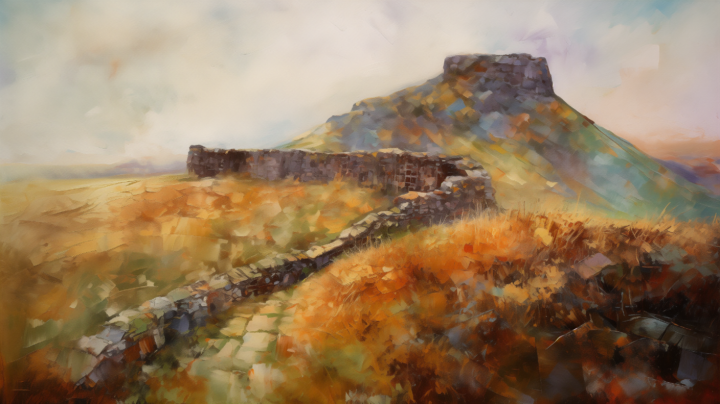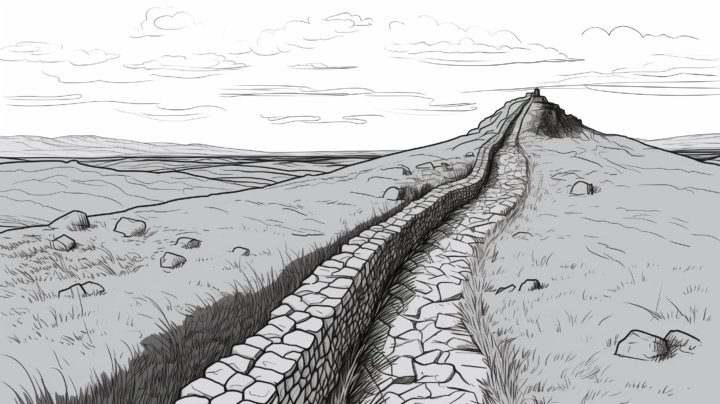I can’t quite pinpoint when Hadrian’s Wall first entered my life. Was it a line in a book, a fleeting image on a TV show, or perhaps a fragment of a history lesson that lodged itself in the corners of my mind? The origin of this fascination remains shrouded in mystery, but the obsession it sparked is apparent.
I devoured books and articles about this ancient Roman structure, each fact and anecdote fueling my imagination. I even dreamt of its stones and pathways. Yet, born a thousand miles away, I was separated from this magnificent structure by more than just distance. There were other walls, invisible yet daunting, that stood between us.
Then, in the nascent days of 2020, before the unfolding pandemic gripped the world, I found myself on a plane to Edinburgh. The dream that had long seemed distant was suddenly within reach. I booked a tour with a charismatic guide, Eric Murdoch aka The Tartan Viking, and soon began my pilgrimage to a place that had lived in my thoughts for years.

As my journey unfolded, the Wall revealed itself in segments and relics, each with its own story. For instance, Vindolanda welcomed me with the echoes of Roman soldiers and native Britons. The Vindolanda tablets, with their fascinating details of daily life, bridged a two-thousand-year gap, connecting me to the people who once walked these roads.
Further along the Wall, we visited several ruined forts, each a testament to Rome’s far-reaching influence. I could almost hear the clatter of Roman legionaries’ armour and the calls of the sentries as I navigated through the ruins! The strategic brilliance of these fortifications became apparent as I observed the panoramic views they offered over the surrounding countryside, views that once allowed the Romans to maintain their grip on this distant frontier.
Among these historical jewels, one natural feature stood out—the famous Sycamore Gap tree. Nestled dramatically in the Wall’s landscape, this solitary tree was a breathtaking sight, a symbol of resilience amid ancient stones. Sadly, the tree was felled in 2023, making my encounter with it all the more poignant. Witnessing such a storied symbol before its untimely disappearance from the Wall’s historic panorama was a privilege.

Elia Kabanov is a science writer covering the past, present and future of technology (@metkere)
All images: Elia Kabanov feat. Midjourney
This post represents my ongoing AI art project about personal experiences of visiting the English Heritage.
It’s important to note that all the images provided in this project are artistic impressions generated by artificial intelligence. While they capture the essence and spirit of the English Heritage sites, they may not accurately represent reality. The AI-generated images are a fusion of historical data and creative interpretation, meant to evoke emotions and curiosity rather than provide precise historical or architectural documentation. This project aims to celebrate the beauty and significance of these sites while embracing the innovative possibilities that AI offers in the realm of artistic expression.
If you like what I’m doing here, subscribe to my newsletter on all things science:
